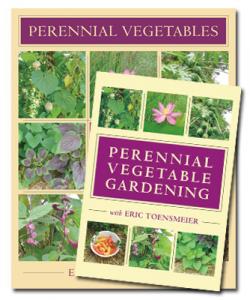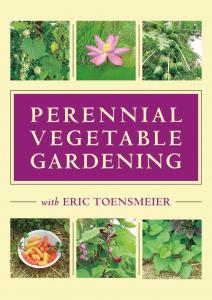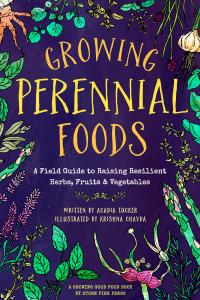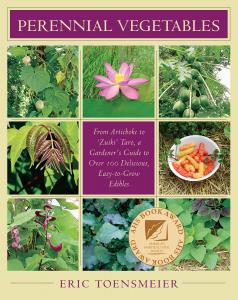Heirloom asparagus is a treasure hidden in plain sight in our gardens. This perennial vegetable is about more than just taste; it’s a direct lineage to our agricultural past. ‘Heirloom’ refers to plant varieties cultivated and passed down through generations, often for a century or more. Human or technological methods haven’t altered these varieties significantly, making them pure slices of history.
What’s exceptional about heirloom asparagus is its resilience and its deep roots, both literally and figuratively, in traditions of agriculture. This asparagus is different from your average supermarket pick. It comes from strains our predecessors savored, and today, they still offer robust flavors and rich nutrients. Moreover, they often trump modern varieties in taste and texture, turning a simple meal into a heritage experience.
Preserving heirloom asparagus isn’t just for the sake of nostalgia. By choosing these varieties, gardeners maintain genetic diversity in our food crops — a crucial defense against pests and diseases. It’s a choice that supports not just personal health, with its array of vitamins and minerals, but also the health of our global ecosystem.
Connection with our culinary past has never been more relevant. Bringing heirloom asparagus to our tables is a perfect place to start as we seek more profound meaning in the food we grow and eat. It’s a commitment to biodiversity, quality food, and each other. Stay with me, and let’s explore the vibrant world of heirloom asparagus, from selecting the perfect variety to savoring your first harvest.
Planning Your Heirloom Asparagus Garden
To ensure a successful yield, the first thing you need to do is choose a variety that thrives in your specific climate. Plant resilience and adaptability to your local conditions are a must. Research through a local extension office or seasoned gardeners could pave the way to a flourishing asparagus bed.
Site Preparation
The perfect site is paramount for heirloom asparagus. Choose a location unobstructed by trees or buildings to ensure the plants receive daily 6-8 hours of direct sunlight. Preparing the soil is your next big task; it should be well-draining to prevent water logging, which can lead to root rot. Adding rich organic matter will create the ideal environment for these perennial vegetables. A pH level of 6.5 to 7.0 is suitable for growing asparagus.
Planting Asparagus
Starting asparagus from seeds is cost-effective, allowing for a wide selection of varieties and the satisfaction of growing plants from their earliest stage. However, it requires patience, as seed-started asparagus takes an additional year to produce harvestable spears compared to crowns. Planting crowns offers a quicker harvest, usually within two to three years, but comes at a higher cost and with fewer variety options. Seeds may also mix male and female plants, whereas crowns are often selected for male dominance for higher yield.
To start asparagus from seeds, consider the following guidelines:
- Seed Starting Indoors: To grow asparagus, begin by sowing the seeds indoors 10-12 weeks prior to the last expected frost. Plant seeds about 1/2 inch deep in fertile potting soil, maintaining a temperature between 70 and 85 degrees F for optimal germination.
- Transplanting Seedlings: After the risk of frost has passed, transplant the asparagus seedlings to your garden. Space them closer than mature crowns, 5 – 7 inches apart in rows 1.5 feet apart, to allow for some dieback or later thinning.
- Care and Harvest: While asparagus started from crowns can be harvested sooner, seed-started plants require patience. Expect to harvest lightly in the third year and more fully by the fourth year as the plants mature.
It’s important to remember that spacing is crucial when growing asparagus from both seeds and crowns. If you’re growing asparagus from crowns, make sure to allow 12-18 inches of space between plants, with rows spaced 4-5 feet apart. This generous amount of space will help accommodate their vigorous growth. You can plant them in either spring or early fall, depending on your region, as long as the soil is workable.
When it comes to your garden strategy, it’s essential to have patience. Although it may be tempting to harvest asparagus spears as soon as they appear, it’s best to resist this urge for the first three or four years. Allowing the plants to mature will help strengthen their root system, ultimately resulting in a more fruitful outcome in the future. By planting heirloom asparagus correctly, you could potentially enjoy their spears for over 20 years.
When caring for your newly established plants, it’s important to use proper cultivation techniques. This section focuses on the essential aspects of gardening, such as watering, mulching, pest control, and disease prevention. By putting in a little effort, you can ensure that your heirloom asparagus garden thrives and lasts for a long time.
To learn more about starting seeds indoors, please visit my post on A Guide to Starting Seeds Indoors
Nurturing Your Heirloom Asparagus
Cultivation Best Practices
Consistent watering is essential for asparagus, particularly during the first two growing seasons while it is establishing its root system. It’s best to aim for about an inch of water weekly, and during dry periods, it may require more. Drip irrigation is recommended as it helps maintain consistent moisture levels without over-saturating the soil.
Adding organic mulch to your garden beds is an effective way to keep moisture in the soil and prevent weed growth. Mulch, such as straw or compost, serves as a protective barrier that retains soil moisture and nutrients, supporting healthy plant growth. Furthermore, mulching stimulates the growth of helpful microorganisms that can enhance soil richness in the long term.. By using organic mulch, you can maintain a healthy and vibrant garden while minimizing the need for chemical treatments.
Companion Planting
Incorporating companion plants like basil, marigolds, parsley, and tomatoes in your asparagus garden can help prevent pests and improve growth. Basil and marigolds help to control pests and promote ecosystem resilience. Parsley attracts helpful insects that manage asparagus beetle populations, while tomatoes repel specific asparagus pests. This technique not only enhances the health and yield of your plants but also supports ecological balance, helping to create a more sustainable and resilient garden.
Pest and Diseases
Fusarium Wilt
Symptoms: The plant’s lower leaves may start to turn yellow and wilt, which gradually progresses upwards. Additionally, there may be a reddish-brown discoloration of the vascular system, which can indicate a potential issue with the plant’s health.
Treatment: To prevent Fusarium Wilt disease, it is important to maintain healthy plants, especially in warm and moist conditions. Make sure to provide enough nutrients and water to your plants. Using mulch can help cool the soil and create a healthier environment. For a long-term improvement in soil health, focus on improving drainage, enriching the soil with organic material, and choosing disease-resistant plant varieties. These strategies can effectively manage the impact of the disease.
Asparagus Rust
Symptoms: Asparagus plants can be affected by a disease that causes the appearance of orange or reddish spots on the spears and foliage. This disease can lead to defoliation, which means the leaves fall off, and a reduction in the amount of asparagus that the plant produces.
Treatment: To treat fungal infections in plants, applying sulfur-based fungicides as early in the season as possible is recommended. Additionally, removing any affected plant parts can help prevent the infection’s spread. Finally, ensuring that the plants have enough space for air circulation can also aid in their recovery.
Asparagus Beetle Management
Symptoms: This particular pest can be identified through a few distinguishing characteristics. Firstly, its presence is indicated by partially eaten spears and leaves. Additionally, dark-colored beetles or their larvae can be found in the affected areas.
Treatment: To manage beetle populations, it’s important to regularly monitor and intervene early. You can do this by handpicking beetles and their larvae, using neem oil as a treatment, and attracting beneficial insects such as ladybugs to control the beetles naturally. Be sure to follow the application instructions of the treatment to avoid harming beneficial insects.
Your asparagus plants will eventually transition from the careful nurturing phase to a state of readiness for harvest. The key is knowing when and how to pick them, which maximizes your yield and ensures a robust crop for the following years.
"Here's a little transparency: Our website contains affiliate links. This means we may receive a small commission if you click and make a purchase. Don't worry; there's no extra cost for you. It's a simple way you can support our mission to bring you quality content."
Harvesting and Utilizing Your Heirloom Asparagus
Harvesting
Knowing when to harvest heirloom asparagus is important to get the best flavor and texture. Generally, it is recommended to start harvesting when the spears are around 6-8 inches tall and have a diameter similar to that of a pencil. Keep a watchful eye during spring, as this is when the asparagus grows quickly.
To ensure the longevity of asparagus plants, it is crucial to cut them properly. When harvesting asparagus, it is recommended to use a sharp knife or an asparagus cutter to slice the spear at or slightly below the soil level. Careful cutting of the asparagus spears helps to avoid breaking them and causing damage to the crown, which can result in reduced future yields. Therefore, using a sharp tool to cut the asparagus correctly is essential for the overall health of the plant.
Seed Harvesting and Preparation
In order to collect seeds from the berries of female asparagus plants, you should wait until the fall season when the berries are fully ripe and mature. You can identify the female plant by its red berries that grow in clusters and are roughly the size of small peas. Once you have identified the female plants, use a pair of scissors or clippers to snip off the berry-laden branches. Be sure to handle the branches with care to avoid damaging the berries.
Next, you will need to remove the berries from the branches and separate them from the pulp. This can be done by placing the berries in a bowl of water and gently rubbing them between your fingers to release the seeds. After you have separated the seeds from the pulp, spread them out on a piece of paper or cloth to dry. After the seeds have dried completely, place them in an airtight container or envelope and store them until it is time to plant them in the spring. By following these steps, you will have a fresh supply of asparagus seeds to use for planting in your garden.
In the Kitchen
Heirloom asparagus is a type of asparagus that has been cultivated for centuries, often passed down through generations of farmers. It possesses a distinctive taste that distinguishes it from modern hybrids, which are bred to optimize output and consistency. Heirloom asparagus can be prepared in a variety of ways to highlight its distinctive taste. For example, grilling or roasting it can bring out its nutty, earthy flavors, while pickling it can add a tangy element to your dishes. Additionally, raw heirloom asparagus can be shaved into salads for a satisfying crunch. Whether you're an experienced chef or a novice in the kitchen, heirloom asparagus is a versatile and delicious ingredient to experiment with.
Preserving
Asparagus is a versatile and healthy vegetable that can be prepared in many ways. If you're lucky enough to have a bountiful harvest, you can preserve it for year-round enjoyment. One of the best ways to do this is by blanching and freezing the asparagus. Blanching involves briefly boiling the asparagus to stop enzyme activity and preserve its color, texture, and flavor. Once blanched, the asparagus can be frozen and stored for several months. This is a great way to enjoy fresh asparagus even when it's out of season.
Another option for preserving asparagus is canning. However, it's important to use the correct method to prevent potential foodborne illnesses. As asparagus is a low-acid food, it's best to use pressure canning. This involves cooking the asparagus in a pressure canner at a high temperature to kill any harmful bacteria. By using this method, you can safely store canned asparagus for up to a year. So if you have an abundance of asparagus, don't let it go to waste! Preserve it using either the blanching and freezing or pressure canning method.
For a more holistic view please read my post on The Essential Guide To Heirloom Plant Care And Propagation.
In Closing
Growing heirloom asparagus is a way to connect with our agricultural legacy. These varieties remain unaltered by human intervention or technology, providing not only culinary pleasure but also a link to the past. Their resilience and traditional farming techniques are essential in maintaining genetic diversity, which is crucial for pest and disease resistance, as well as supporting worldwide ecosystem health. By cultivating heirloom asparagus, from the selection process to the harvest, we promote biodiversity, quality food, and a dedication to sustainable agriculture practices. It is a testament to the importance of preserving these varieties for future generations and enriching our gardens and tables with history and flavor.





